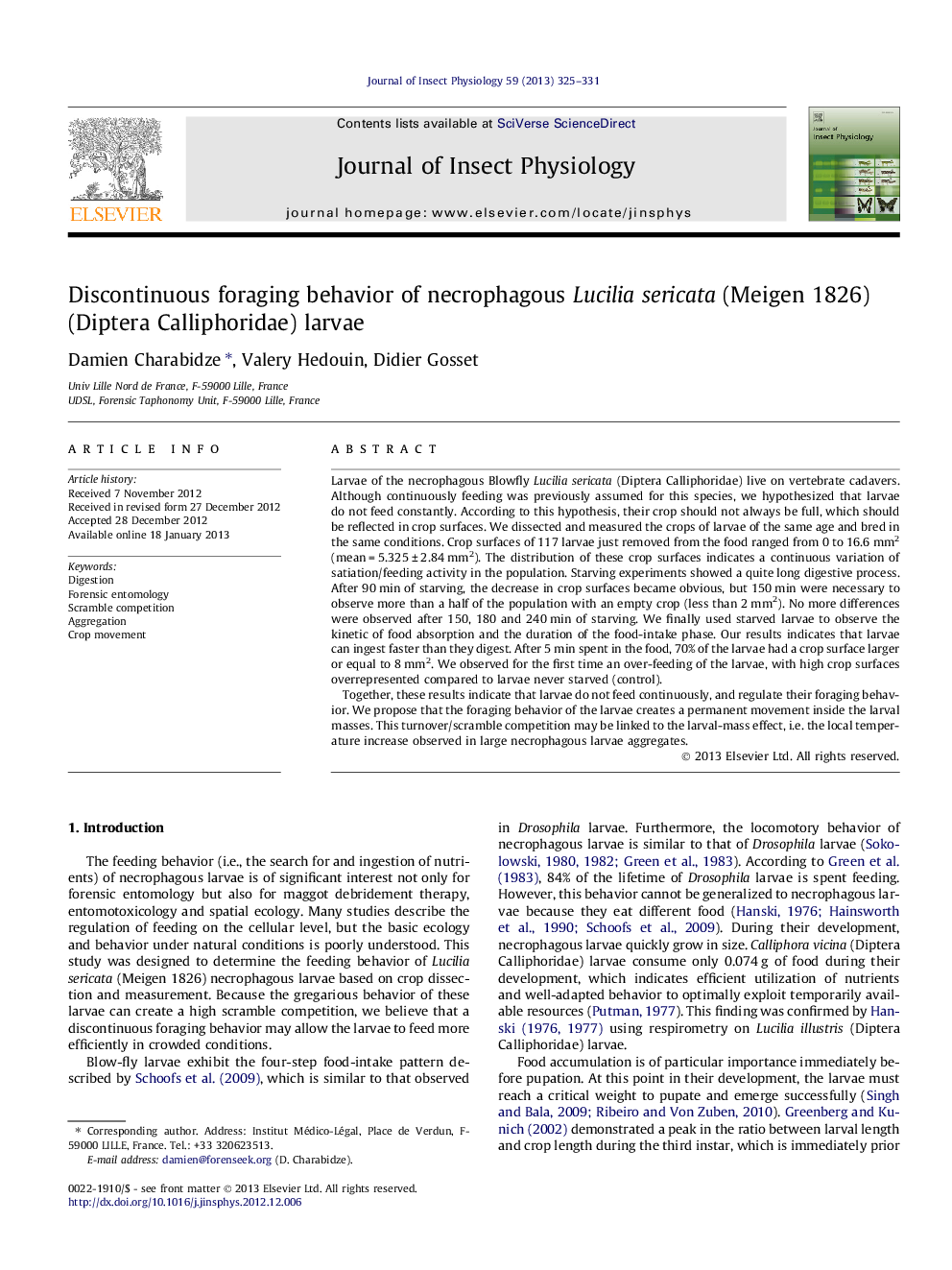| کد مقاله | کد نشریه | سال انتشار | مقاله انگلیسی | نسخه تمام متن |
|---|---|---|---|---|
| 2840495 | 1165325 | 2013 | 7 صفحه PDF | دانلود رایگان |

Larvae of the necrophagous Blowfly Lucilia sericata (Diptera Calliphoridae) live on vertebrate cadavers. Although continuously feeding was previously assumed for this species, we hypothesized that larvae do not feed constantly. According to this hypothesis, their crop should not always be full, which should be reflected in crop surfaces. We dissected and measured the crops of larvae of the same age and bred in the same conditions. Crop surfaces of 117 larvae just removed from the food ranged from 0 to 16.6 mm2 (mean = 5.325 ± 2.84 mm2). The distribution of these crop surfaces indicates a continuous variation of satiation/feeding activity in the population. Starving experiments showed a quite long digestive process. After 90 min of starving, the decrease in crop surfaces became obvious, but 150 min were necessary to observe more than a half of the population with an empty crop (less than 2 mm2). No more differences were observed after 150, 180 and 240 min of starving. We finally used starved larvae to observe the kinetic of food absorption and the duration of the food-intake phase. Our results indicates that larvae can ingest faster than they digest. After 5 min spent in the food, 70% of the larvae had a crop surface larger or equal to 8 mm2. We observed for the first time an over-feeding of the larvae, with high crop surfaces overrepresented compared to larvae never starved (control).Together, these results indicate that larvae do not feed continuously, and regulate their foraging behavior. We propose that the foraging behavior of the larvae creates a permanent movement inside the larval masses. This turnover/scramble competition may be linked to the larval-mass effect, i.e. the local temperature increase observed in large necrophagous larvae aggregates.
Figure optionsDownload as PowerPoint slideHighlights
► We dissected and measured the crops of Lucilia sericata necrophagous larvae.
► Both fed and starved larvae are present in control (food available) populations.
► Larvae ingest much faster than they digest; they do not feed continuously.
► Foraging behavior vary among larvae.
► Gregariousness and foraging behavior may be closely related.
Journal: Journal of Insect Physiology - Volume 59, Issue 3, March 2013, Pages 325–331